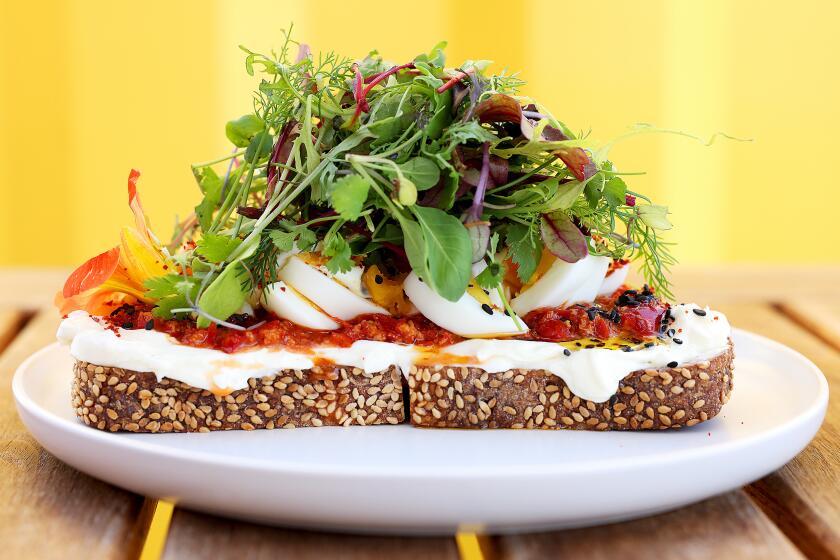Master Class: Details are key to great ratatouille

However you’re going to spin your ratatouille, every variation starts with making a simple stew. And as with all such dishes, the difference between good and great lies in the details.
• Roast and peel the peppers before adding them to the stew. This not only deepens the flavor but also prevents the papery skins from separating during cooking and cluttering the final dish.
• Cook the dish in a wide, shallow pot — you want something at least 12 inches in diameter. A wide pot has greater surface area, which will allow for more even cooking and a more rapid evaporation of excess liquid. It will help concentrate the flavors and maintain the integrity of the ingredients.
• To further control the evaporation, use a cartouche, or a paper lid. It’s easy to make: Fold a square of parchment paper that is larger than the diameter of the pot in half and then in half again. Now fold the folded edges of the square together to form a triangle and repeat this process one more time. Hold the center of the triangle over the center of the pot and cut the parchment following the diameter of the pot. Snip the very tip of the triangle, then unfold the parchment. You should have a circular piece of parchment paper about the diameter of the pot with a small hole in the center.
• Cook the ratatouille in stages so each vegetable is brought to the appropriate point and retains integrity of flavor and texture. Bring them together at the end to marry the flavors.
• When making the tomato base for the ratatouille, taste the onions to make sure they are very soft before adding the tomatoes. If the onions are not completely tender, the acidity of the tomatoes will prevent them from softening further.
• Be sure to cook the tomato base almost dry before adding the other vegetables, otherwise the stew will be watery. If you’re using fresh tomatoes, choose low-moisture “paste” varieties, such as San Marzano.
• It is important to cook the zucchini in one even, flat and uncrowded layer so it cooks evenly. If your pan is too small to do this, divide the zucchini into smaller batches to maintain the even layer.
• Be careful when seasoning with vinegar. You should add only enough to brighten the flavor without actually tasting the sharpness of the acidity.
More to Read
Eat your way across L.A.
Get our weekly Tasting Notes newsletter for reviews, news and more.
You may occasionally receive promotional content from the Los Angeles Times.










